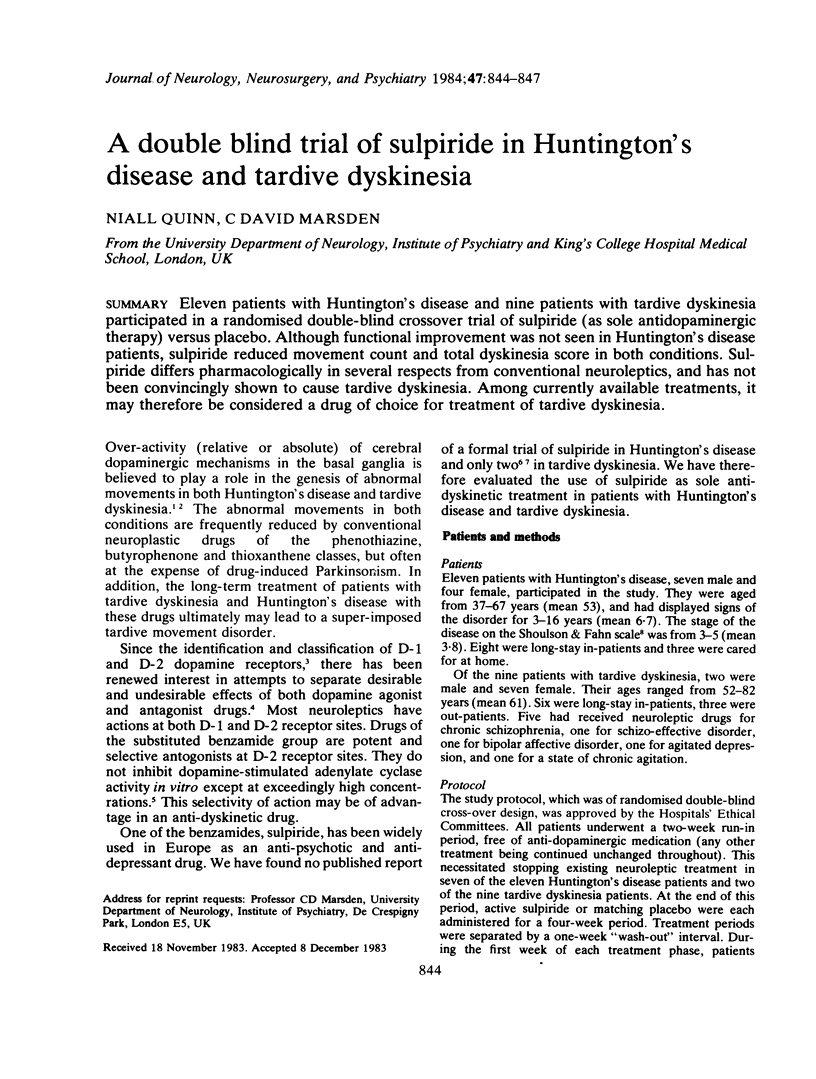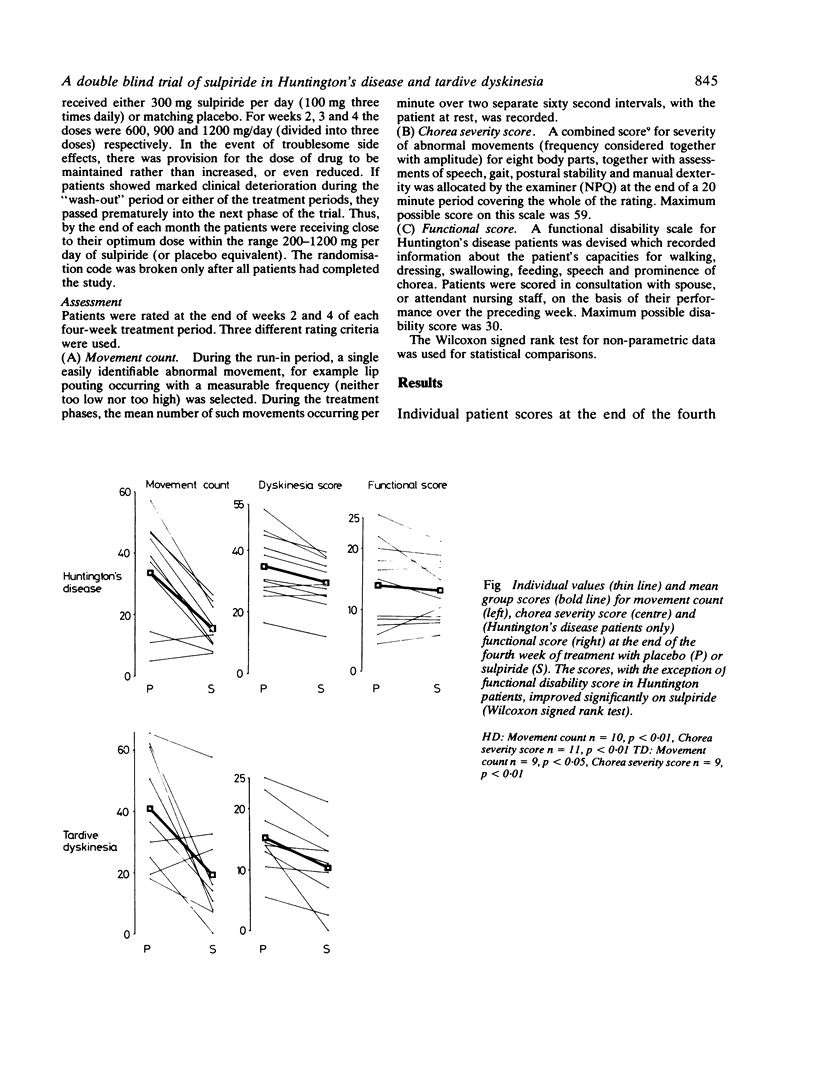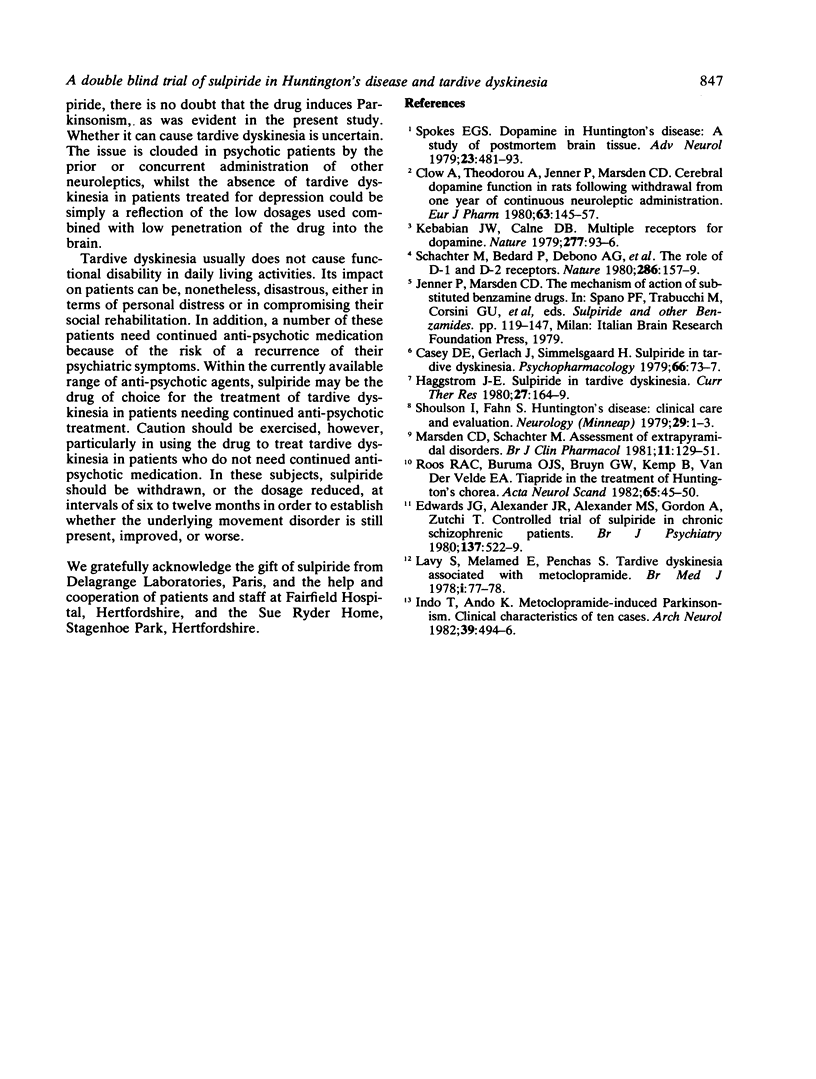Abstract
Eleven patients with Huntington's disease and nine patients with tardive dyskinesia participated in a randomised double-blind crossover trial of sulpiride (as sole antidopaminergic therapy) versus placebo. Although functional improvement was not seen in Huntington's disease patients, sulpiride reduced movement count and total dyskinesia score in both conditions. Sulpiride differs pharmacologically in several respects from conventional neuroleptics, and has not been convincingly shown to cause tardive dyskinesia. Among currently available treatments, it may therefore be considered a drug of choice for treatment of tardive dyskinesia.
Full text
PDF



Selected References
These references are in PubMed. This may not be the complete list of references from this article.
- Casey D. E., Gerlach J., Simmelsgaard H. Sulpiride in tardive dyskinesia. Psychopharmacology (Berl) 1979;66(1):73–77. doi: 10.1007/BF00431993. [DOI] [PubMed] [Google Scholar]
- Clow A., Theodorou A., Jenner P., Marsden C. D. Cerebral dopamine function in rats following withdrawal from one year of continuous neuroleptic administration. Eur J Pharmacol. 1980 May 2;63(2-3):145–157. doi: 10.1016/0014-2999(80)90438-0. [DOI] [PubMed] [Google Scholar]
- Edwards J. G., Alexander J. R., Alexander M. S., Gordon A., Zutchi T. Controlled trial of sulpiride in chronic schizophrenic patients. Br J Psychiatry. 1980 Dec;137:522–529. doi: 10.1192/bjp.137.6.522. [DOI] [PubMed] [Google Scholar]
- Indo T., Ando K. Metoclopramide-induced Parkinsonism. Clinical characteristics of ten cases. Arch Neurol. 1982 Aug;39(8):494–496. doi: 10.1001/archneur.1982.00510200036006. [DOI] [PubMed] [Google Scholar]
- Kebabian J. W., Calne D. B. Multiple receptors for dopamine. Nature. 1979 Jan 11;277(5692):93–96. doi: 10.1038/277093a0. [DOI] [PubMed] [Google Scholar]
- Lavy S., Melamed E., Penchas S. Tardive dyskinesia associated with metoclopramide. Br Med J. 1978 Jan 14;1(6105):77–78. doi: 10.1136/bmj.1.6105.77. [DOI] [PMC free article] [PubMed] [Google Scholar]
- Marsden C. D., Schachter M. Assessment of extrapyramidal disorders. Br J Clin Pharmacol. 1981 Feb;11(2):129–151. doi: 10.1111/j.1365-2125.1981.tb01118.x. [DOI] [PMC free article] [PubMed] [Google Scholar]
- Roos R. A., Buruma O. J., Bruyn G. W., Kemp B., van der Velde E. A. Tiapride in the treatment of Huntington's chorea. Acta Neurol Scand. 1982 Jan;65(1):45–50. doi: 10.1111/j.1600-0404.1982.tb03060.x. [DOI] [PubMed] [Google Scholar]
- Schachter M., Bédard P., Debono A. G., Jenner P., Marsden C. D., Price P., Parkes J. D., Keenan J., Smith B., Rosenthaler J. The role of D-1 and D-2 receptors. Nature. 1980 Jul 10;286(5769):157–159. doi: 10.1038/286157a0. [DOI] [PubMed] [Google Scholar]
- Shoulson I., Fahn S. Huntington disease: clinical care and evaluation. Neurology. 1979 Jan;29(1):1–3. doi: 10.1212/wnl.29.1.1. [DOI] [PubMed] [Google Scholar]


